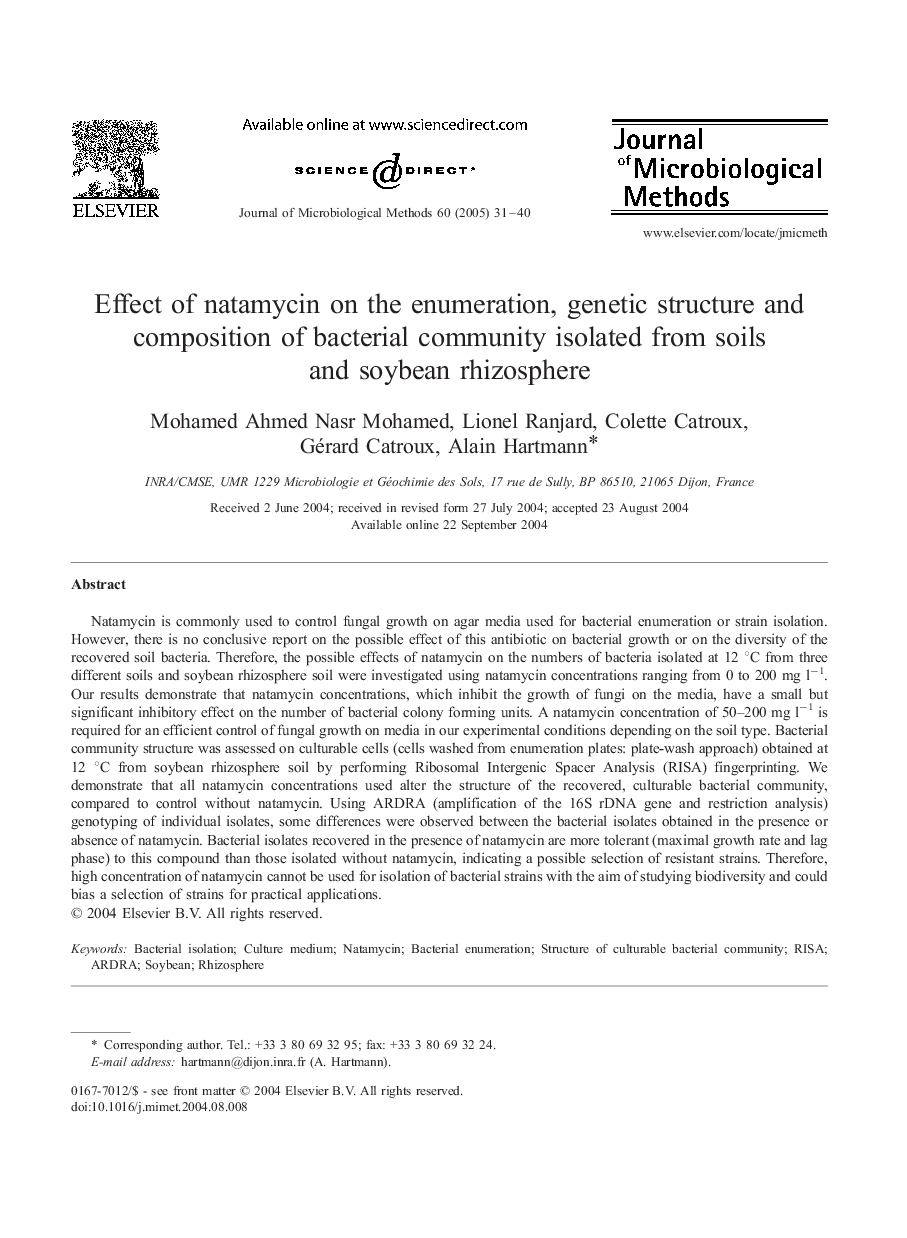| Article ID | Journal | Published Year | Pages | File Type |
|---|---|---|---|---|
| 10890855 | Journal of Microbiological Methods | 2005 | 10 Pages |
Abstract
Natamycin is commonly used to control fungal growth on agar media used for bacterial enumeration or strain isolation. However, there is no conclusive report on the possible effect of this antibiotic on bacterial growth or on the diversity of the recovered soil bacteria. Therefore, the possible effects of natamycin on the numbers of bacteria isolated at 12 °C from three different soils and soybean rhizosphere soil were investigated using natamycin concentrations ranging from 0 to 200 mg lâ1. Our results demonstrate that natamycin concentrations, which inhibit the growth of fungi on the media, have a small but significant inhibitory effect on the number of bacterial colony forming units. A natamycin concentration of 50-200 mg lâ1 is required for an efficient control of fungal growth on media in our experimental conditions depending on the soil type. Bacterial community structure was assessed on culturable cells (cells washed from enumeration plates: plate-wash approach) obtained at 12 °C from soybean rhizosphere soil by performing Ribosomal Intergenic Spacer Analysis (RISA) fingerprinting. We demonstrate that all natamycin concentrations used alter the structure of the recovered, culturable bacterial community, compared to control without natamycin. Using ARDRA (amplification of the 16S rDNA gene and restriction analysis) genotyping of individual isolates, some differences were observed between the bacterial isolates obtained in the presence or absence of natamycin. Bacterial isolates recovered in the presence of natamycin are more tolerant (maximal growth rate and lag phase) to this compound than those isolated without natamycin, indicating a possible selection of resistant strains. Therefore, high concentration of natamycin cannot be used for isolation of bacterial strains with the aim of studying biodiversity and could bias a selection of strains for practical applications.
Related Topics
Life Sciences
Biochemistry, Genetics and Molecular Biology
Biotechnology
Authors
Mohamed Ahmed Nasr Mohamed, Lionel Ranjard, Colette Catroux, Gérard Catroux, Alain Hartmann,
